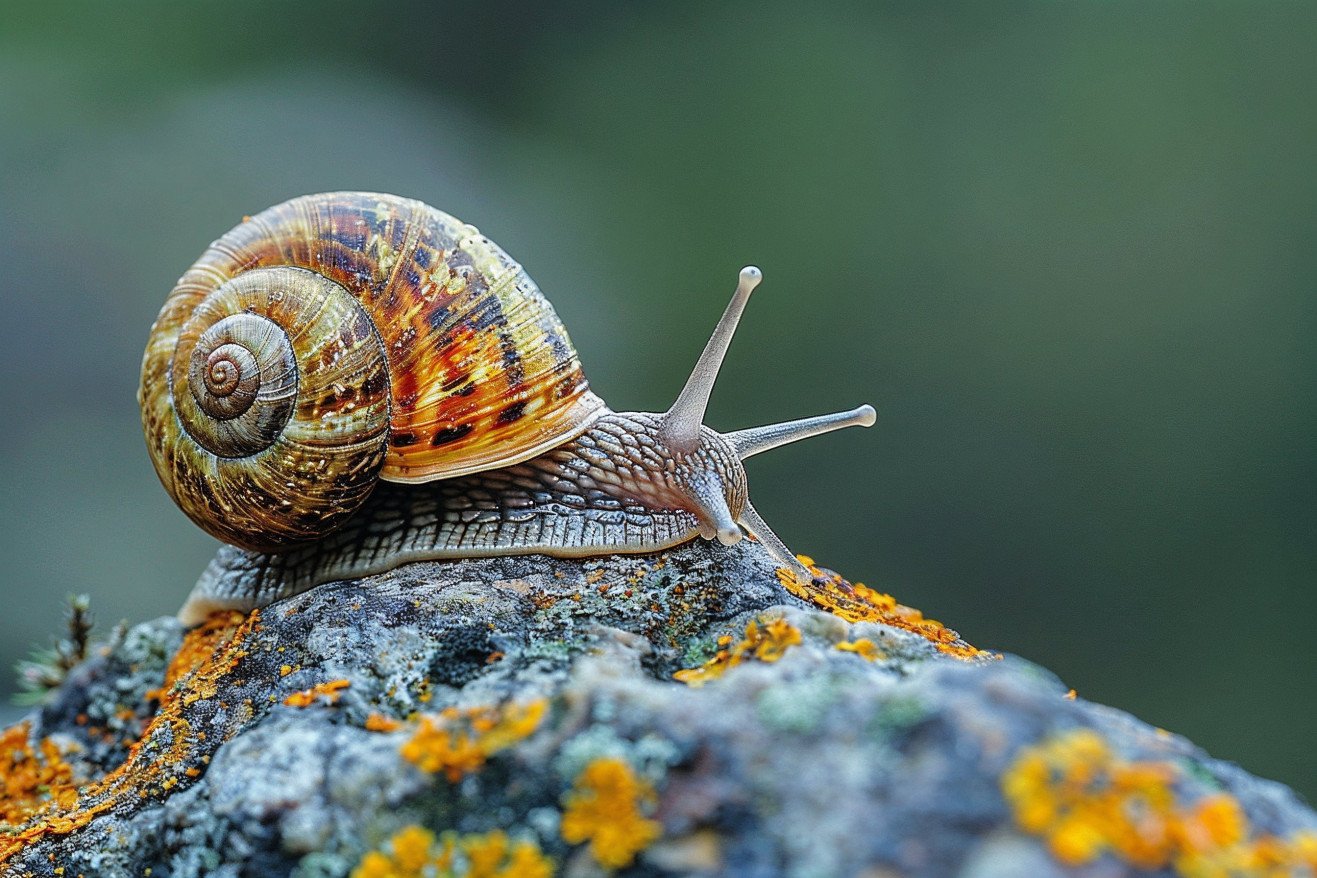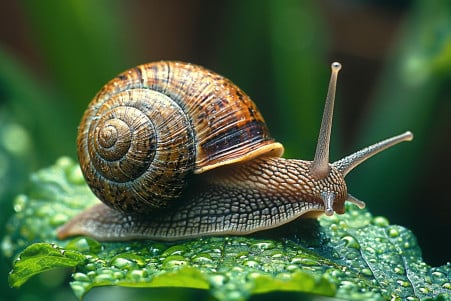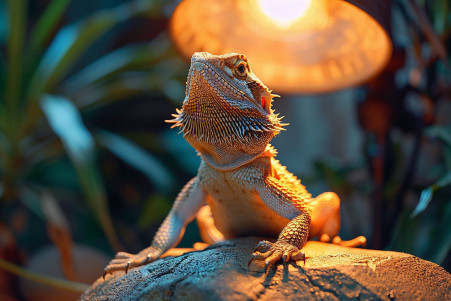How Long Do Snails Live? The Science of a Slow Life Span
3 May 2024 • Updated 2 May 2024

How long do snails live – and what determines the lifespan of these slow-moving mollusks? The majority of garden snail species live between 2-5 years, although the largest species, such as the giant African land snail, can live up to 10 years. A snail's environment, diet, and susceptibility to disease are just a few of the factors that can influence how long it lives.
This article will delve into the scientific literature and studies that have investigated the average lifespan of different snail species living in a variety of environments. From lab-based research to studies conducted in the field, this investigation pulls together the most important factors that determine how long a snail will live - and in the process, provides insight into the slow life span of these fascinating animals.
How long do snails live?
Aquatic vs. Terrestrial: How Long Do Snails Live in Different Habitats?
The difference in lifespan between aquatic and terrestrial snails is quite striking. For example, mystery snails and nerite snails, which are both aquarium snails, can live for more than 10 years if kept in a tank with the right conditions, including a temperature between 65-82°F, according to Pets on Mom.com. However, if the water temperature is increased, the snail's metabolism will speed up and it will go through its life cycle more quickly, living for only 1-1.5 years.
On the other hand, land snails generally live for shorter periods of time due to the fact that they are more exposed to predators, temperature changes, and other environmental factors. One exception is the giant African land snail, which can live for 5-10 years in the wild if it has the right habitat and protection. As Wikipedia explains, this snail can even hibernate for up to three years during a drought, which may help explain its long lifespan.
The differences in the conditions of aquatic and terrestrial habitats are key to determining how long snails live. While snails in an aquarium can live for more than a decade in a stable environment, the conditions for snails in the wild are much more variable and risky, which can have a big impact on how long they live. This is why it's so important to make sure that snails are kept in the right environment for their species if they are to live up to their full potential in terms of lifespan.
Environmental Factors That Affect Snail Lifespan
Water quality factors such as dissolved ions, organic matter, and chlorophyll concentrations have been shown to have a direct effect on snail populations and their lifespan. A paper in Parasites & Vectors found that physico-chemical factors including water temperature, turbidity, and alkalinity were the most important factors determining snail occurrence and abundance in the Ethiopian Rift Valley area.
Physical habitat factors such as substrate type, water depth, and macrophyte cover are also important, as demonstrated in a paper in the journal Tropical Medicine. Snails were most abundant in coarser-grained benthic habitats with lower emergent macrophyte cover.
Unfortunately, human factors such as pollution, habitat loss, and poor sanitation can also disrupt predator-prey relationships and end up benefiting snails. The study found that snails were more abundant in agricultural areas due to habitat changes caused by deforestation and agricultural activities.
That said, there are things that can be done to increase snail lifespan in gardens and other captive settings. Keeping them in a consistently moist environment, not using pesticides, and protecting them from predators are all ways to help ensure that snails live longer, according to AI Garden Planner. By learning more about the environmental factors that affect snail lifespan, we can help ensure the survival of these amazing animals.
Reproduction and Mating: Effects on Snail Life Span
In some snail species, mating and reproduction can have substantial short-term costs in terms of growth and resource allocation. For example, a study in the journal Ecology and Evolution found that mated snails had shorter reproductive and somatic (non-reproductive) lifespans than their isolated counterparts. In addition, the researchers discovered that a diet of Spirulina also reduced both reproductive and somatic life spans in the freshwater snail they studied.
Of note, the length of the post-reproductive period was shown to be proportional to somatic, but not reproductive, life span. This post-reproductive period made up to 45% of the snail's total life span, with longer periods generally seen in snails fed a diet of lettuce.
That said, not all snail species exhibit significant differences in life span between mated and unmated individuals. A study on the hermaphroditic freshwater snail Helisoma trivolvis found no evidence of long-term costs of reproduction on life span, even though there were clear short-term costs of reproduction on growth. This indicates that the effects of mating and reproductive strategies on life span can vary between different snail species.
Snail Species With the Longest Lifespans: An In-Depth Look at Exceptional Longevity
The giant African land snail and the Powelliphanta snail from New Zealand are two of the longest-living snail species, with lifespans that can reach up to 10 and 20 years, respectively. According to Wikipedia, the giant African land snail can even enter dormancy for up to 3 years during droughts, which is likely one of the reasons it has such an exceptionally long lifespan.
Larger snail species with thicker shells, such as the Roman/Apple snail, also tend to live longer due to the increased protection from predators that their shells provide as they age. A study of a population of Roman or Apple snails in England showed that some of the snails were at least 6-9 years old, and the older snails were more active because their thick shells made them less vulnerable to predators.
In addition, some garden snail species in California have been shown to live for more than 6 years, with individuals not reaching sexual maturity until they were 2-4 years old. Large body size, thick shells, and the ability to enter dormancy when conditions are unfavorable are all factors that contribute to the long lifespans of some snail species.
As we've seen, snails can live for a wide range of lengths of time, with some species living for more than 20 years under the right circumstances. Learning about the special adaptations and environmental conditions that allow these long-living snails to thrive can help us understand how to best support snail longevity in the wild and in captivity.
How to Increase the Lifespan of a Snail: Best Practices and Tips
Ensuring that snails have the best possible living conditions is the most important factor in increasing their lifespan, whether they are kept as pets or in a garden. As noted by The Spruce Pets, this means making sure that they have an appropriate habitat that includes the right temperature, humidity, and substrate for their species. In addition, a healthy diet that includes plenty of calcium and other important nutrients, which can be found in fresh fruits, vegetables, and calcium supplements like cuttlebone or crushed eggshells, can help them live longer.
Keeping their living space clean is also important to make sure that bacteria and fungi don’t build up. AI Garden Planner also notes that it’s important to reduce stress by making sure that they have places to hide, that they aren’t overcrowded, and that they are handled carefully so that they don’t experience any shell damage. Finally, watching for signs of illness or parasites and getting veterinary care when necessary can help them live longer.
By following these tips and making sure that their care is tailored to their species, we can make sure that these interesting animals live as long as possible and enjoy the slow, steady path to a long life.
Conclusion: The Slow and Steady Journey of Snail Longevity
The lifespan of land snails can be as short as one year for smaller species and as long as 25 years for larger species in captivity. According to Wikipedia, larger species like the Roman snail have longer lifespans than smaller species, with 10-year-old individuals being "probably not uncommon in natural populations."
This is due in part to the fact that the environment can have a significant impact on the lifespan of snails, with those in captivity living much longer than those in the wild. This is because snails in captivity have access to food, water, and protection from predators. In addition, hibernation and estivation during unfavorable conditions can help extend a snail's life by allowing them to save energy and resources.
The timing of reproduction is also important. Snails that start reproducing later in life tend to have longer lifespans than those that start reproducing earlier because the energy used in reproduction can shorten their lives. In addition, the high rates of predation in the wild limit the lifespan of many species of snails, as the study pointed out.
Unfortunately, the extinction of many species of snails due to human activities like pollution and habitat destruction has also shortened the lifespan of wild populations. Still, with the right care and environment, snails can live long lives—up to 25 years in some cases, according to UW Photo Ring.
By learning more about the biological and environmental factors that influence snail longevity, we can help these interesting animals live their best lives, whether they're in captivity or the wild.


